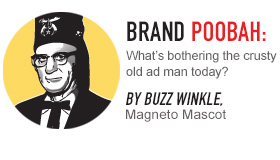The art of storytelling predates civilization, but it remains just as relevant today as it has ever been. With so many companies vying for everyone’s attention, it’s imperative that yours cuts through the noise with a compelling brand story.
A good brand story functions in much the same way as an immersive book or an engaging film. It hooks you emotionally, and it allows you to put yourself at the center of the narrative.
As mentioned in the previous installment of Brand Advertising, Defined, forming emotional connections with your followers is key. You can think of your brand story as the vehicle through which that emotional connection is cultivated and maintained.
But don’t assume that sharing your brand story is a one-way street. A brand’s story is a collaborative living document, and your followers will be active participants in both the interpretation and transmission of your ideas.
Your brand story extends far beyond the limits of an advertising campaign or the details on your website’s about page. It’s a story about the very heart of your brand—the idea that makes it unique and valuable to consumers. Taking this approach to your storytelling is crucial, because a product or service without a story is really nothing more than a soulless commodity. And you’re not just in the business of selling commodities; you’re in the business of selling ideas.
Getting to the Heart of Your Brand
Some brand stories center around social responsibility, while others focus on identifying a point of frustration and providing a path to resolution. The one thing all effective stories have in common is their ability to communicate the line of thought that makes a brand one of a kind.
When Dove launched its Real Beauty campaign in 2004, it resonated with a lot of women who were fed up with unrealistic beauty standards portrayed in advertisements. The story was one that any woman could relate to, because whatever her shape, size or color, she had at one point or another felt inadequate about her looks. Beyond that, it was a story that no other major cosmetics companies were trying to tell.
Over a decade has passed, and Dove’s Real Beauty has proven itself to be far more than feel-good messaging. An extension of the ideas communicated through the ad campaign, Dove’s Self-Esteem Project works to promote healthy body image to girls and women. The products Dove sells are not particularly standout when compared to its competitors, but the story being told about what Dove stands for goes a long way in driving engagement and loyalty to the brand.
Plenty of brands benefit from this kind of values-based storytelling, because the idea of tying social responsibility to consumption enables customers to feel as though they are participating in something meaningful.
The Solution You’ve Been Waiting For
Brand storytelling doesn’t have to be about doing well by doing good. In fact, some of the most effective brand stories are the ones that communicate the very reason you are selling your product or service to begin with: You are solving a problem for consumers.
Take Dollar Shave Club, for example. Dollar Shave Club’s business model is a relatively simple one, and the amount of money the company spends on marketing its services pales in comparisons to its competitors. That’s because it’s taking advantage of the shaving industry’s biggest weakness—razors and shaving creams are vastly overpriced.
By validating what consumers had long suspected about their pricey disposable razors, the Dollar Shave Club’s story has cultivated a bond of trust and reliability with its customers. Ask anyone who receives their monthly or bimonthly box of shaving goods to their door, and chances are they’ll be the first ones to tell you that they’ll never go back.
And the Dollar Shave Club didn’t just fill a need for reasonably priced razors; they did so with irreverence, thumbing their nose at the big guys. If you’ve never seen Dollar Shave Club’s hilarious launch video, you’re in for a treat.
One of a Kind
Somewhere inside your company’s narrative is the angle that gets to the heart and soul of your product or service—the unique selling point that cements your brand as irreplaceable. Uncover it and build on it and you will be able to separate your brand from your competition. Here are a few quick tips on getting to that unique selling point to help you tell your brand story:
- Focus on the value your customers will get by engaging with you.
- Be authentic; make sure your story connects honestly with people.
- Ask yourself what would make you curious about your brand.
- Provide reasons why you’re different from your competition.
- Strive to make an emotional connection by looking at what motivates your core customers, and in some cases, your own team.
This stuff may not sound like rocket science, but it isn’t particularly easy either. Don’t feel bad if you need a little help telling your brand story. Here at Magneto, we pride ourselves on our ability to get to the root of what makes your brand one of a kind. We’d be happy to get to the root of yours.
Share:
Recent Posts
- 9/22/2016 • Magneto Creates M Financial’s 2015 Annual Report
- 8/03/2016 • Magneto aligns Marger Johnson’s look with the industries it serves
- 7/20/2016 • Magneto brings bold vision to City Color branding and website development
- 7/13/2016 • Brand Advertising, Defined: The Creative Process
- 5/25/2016 • Brand Advertising, Defined: Where Science Meets Art



